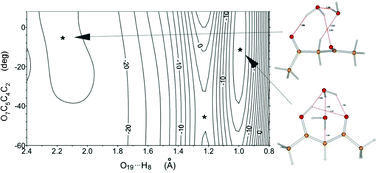The catalytic effect of water on the keto–enol tautomerism. Pyruvate and acetylacetone: a computational challenge†
Abstract
The

- This article is part of the themed collection: Water in biological systems
* Corresponding authors
a
CNR-IPCF, Molecular Modelling Lab, Via Moruzzi 1, I-56124 Pisa, Italy
E-mail:
G.Alagona@ipcf.cnr.it
Fax: +39 050 3152442
Tel: +39 050 3152450
b
Center for Drug Design and Development and the Department of Medicinal and Biological Chemistry, The University of Toledo, Toledo, OH, USA
E-mail:
pnagy@utnet.utoledo.edu
Fax: +1 419-530-7946
Tel: +1 419-530-1945
The

 Please wait while we load your content...
Something went wrong. Try again?
Please wait while we load your content...
Something went wrong. Try again?
G. Alagona, C. Ghio and P. I. Nagy, Phys. Chem. Chem. Phys., 2010, 12, 10173 DOI: 10.1039/C003999C
To request permission to reproduce material from this article, please go to the Copyright Clearance Center request page.
If you are an author contributing to an RSC publication, you do not need to request permission provided correct acknowledgement is given.
If you are the author of this article, you do not need to request permission to reproduce figures and diagrams provided correct acknowledgement is given. If you want to reproduce the whole article in a third-party publication (excluding your thesis/dissertation for which permission is not required) please go to the Copyright Clearance Center request page.
Read more about how to correctly acknowledge RSC content.
 Fetching data from CrossRef.
Fetching data from CrossRef.
This may take some time to load.
Loading related content
